CRI ADX
AISAC
Advanced Interactive Sound and Active Controllerの略
AISACコントロール値に対応するボリュームやピッチ、フィルタ等のカーブを作成して音色を変化させたりする機能。
例えば、あるキャラクターとの距離をコントロール値とし、その距離に応じたキャラクタのセリフ音量のカーブを描いておくことで、距離に応じた音量をデザインすることができます。
他のミドルウェアではRTPC(Real Time Parameter Control)とも呼ばれる。
AISACコントロール
プログラムから任意のAISACを操作するための操作対象。
名前、もしくはIDで指定することができる。
I3DL2リバーブ
アクションキュー
サウンドのさまざまな振る舞い(停止、ポーズ、パラメータの変更等)をキューのリクエストによってコントロールする機能。
暗号化
音声や動画を暗号化してコンテンツ保護する仕組み。
CRI Atom Craftでは全体設定で暗号キーを指定することができます。
インゲームプレビュー
ツールとインゲームを連動させて、ツール上のデータにより音を確認する事。
ウェーブフォームリージョン
トラック下に配置された素材ファイルのリンクオブジェクトの呼称です。
ウェーブフォームリージョンは発音タイミング情報やボリューム、ピッチ、ボイスリミットなどの情報を持ちます。
HCA(コーデック名)
CRI ADXがもつ独自の音声コーデックのひとつ。
1/4~1/16まで圧縮することができる。
ゲーム用途に特化しており、mp3やAAC等の汎用的な音声コーデックに比べて低CPU負荷かつ省メモリ。
HCA-MX(コーデック名)
CRI ADXがもつ独自の音声コーデックのひとつ。
圧縮率や音質はHCAと同じだが、多数の音を同時再生する際に負荷が上がりにくい設計になっている。
エコー
エコーはこだまのように繰り返し反射しつつ減衰していくDSPエフェクトです。
トンネルや硬い壁に囲まれたような空間を演出します。
XAudio2
WindowsとXboxで共通で使えるように設計されたオーディオAPI。
オーディオを出力するだけではなく、ミキシングやエフェクト処理等も行える高機能なライブラリ。
エンコード
一般的には音声や動画を圧縮すること。
CRI Atom Craftでビルドすると音声素材ファイルをADXやHCAに圧縮します。
ASR
Atom Sound Rendererの略。
サウンドのミキシングやDSP処理を行うCRI Atom ライブラリの内部モジュール。
ACFファイル
CRI Atom Craftで出力するファイル。
プロジェクト1つに対して1つだけ出力されます。
全体設定やグローバルなパラメータが含まれます。
ACBファイル
CRI Atom Craftで出力するファイル。
キューシート1つに対して1つ出力されます。
メモリ再生設定されたウェーブフォームデータもここに含まれます。
AWBファイル
CRI Atom Craftで出力するファイル。
キューシートにストリーム再生設定されたウェーブフォームがある場合に出力されます。
ADX(コーデック名)
CRI ADXがもつ独自の音声コーデックのひとつ。
高音質かつ超低負荷だが、圧縮率が1/4程度のため、HCAに比べてファイルサイズは大きくなってしまう。
主に、データサイズよりもCPU負荷が問題になるケースでの選択肢。
音声素材ファイル
wavまたはaiff形式の音声ファイルです。
角度AISAC
仮想ボイス
外部キューリンク
他のキューシートに登録されたキューをトラック上に配置するオブジェクトです。
参照情報としてキュー名またはキューIDの指定が可能です。
キュー
ゲームプログラム側からサウンドをリクエストする際に指定するオブジェクトのこと。
キューはタイムラインを持つシーケンスや複数のトラックに置かれたサウンドアイテムによって構成されている。
一番多いのはサウンドを再生することだが、逆にサウンドを止めたり、パラメータを変えたりすることができる。
CRI Atom Craftで作成することができる。
キューシート
複数のキューをまとめるオブジェクトです。
キューシート単位で音声ファイル群が1つのファイルとして出力されます。
例えば、ゲーム内の1シーンや1キャラクタなどの単位で使用されることを想定しています。
距離減衰AISAC
クリーンビルド
ビルドを行う際、中間生成ファイルなどを一度全て削除(クリーン)してから再ビルドすること。
時間がかかる代わりに一部データの更新ミス、などといった問題を確実に防ぐことができる。
グローバルAISAC
ACFに書き込まれるAISAC。例えば、距離減衰など全体で共通なAISACに使用します。
ランタイム時にプレーヤにアタッチして使用する事もできます。
グローバルAISACリンク
全体設定/グローバルAISACフォルダを参照先とするAISACリンク。
言語設定
出力する言語別の設定情報。
減衰距離
ゲーム変数
プログラム側から指定されるパラメータの1つ。
スイッチタイプのシーケンスに影響する。
コンプレッサ
コーデック
音声データや映像データを記録しておくためのソフトウェアのこと。そのためのフォーマットのことを指すこともある。
“Co”der(符号化)と”Dec”oder(復号化)の合成語。
CRI ADXではADX(コーデック名)やHCA(コーデック名)の他、プラットフォーム固有の様々なコーデックもサポートしている。
コーラス
DSPエフェクトの1つ。元の信号にディレイをかけ、ディレイ時間をLFOでモジュレーションします。
複数の楽器や声で音ならしている時の音のずれなどを表現します。
再生設定
キュー、トラック、ウェーブフォームリージョンに設定可能な再生時のボリュームやピッチ、パン、バスセンドなどの情報。
サウンドアイテム
トラック上に配置したウェーブフォームリージョン、キューリンク、サブシーケンスなどトラック下に配置できるオブジェクトの総称です。
サブシーケンス
サブトラックを持つことができるオブジェクトです。キューリンクと異なり、実体を持った構造をトラック下に配置することが可能です。
SubVersion
バージョン管理ツールの1つ。無料で使うことができます。
CRI Atom CraftにはSubVersionと連携する機能が存在します。
サラウンド
5.1chや7.1chなどステレオより多くの出力をもつサウンド。
サーバー
通常用語
クライアントからの要求で何らかのサービスを提供するコンピュータのこと。
CRI ADX用語
ランタイムで定期的に動作するワーカースレッドのこと。
プレーヤから再生リクエストが行われたとき、このスレッドが実際の音声処理を行います。
CRI Atom ライブラリ
CRI ADXのランタイムライブラリの名前。
ゲームやアプリのプログラムに組み込んで使います。
CSV
カンマ区切りでテキスト表現されたフォーマット。
CRI Atom Craftのプロジェクトをエクスポートしたりインポートすることができる。
シームレス連結再生
サウンドをサンプル単位で接続して繋ぎ目なく再生するランタイムの機能。
ストリーム再生
ストレージに存在しているデータを再生する方式。
いくらか再生レイテンシがある。長い音声に向いている。
→ メモリ再生とストリーム再生
セント
音程を表すための対数単位。
100セント上げると1半音上がり、1200上げると1オクターブ上がる。
CRI ADXではピッチを設定するときに使う単位です。
ゼロレイテンシストリーム再生
メモリ再生とストリーム再生のいい所取りな再生方式。
先頭はメモリ再生しておいて、ストリーム再生へシームレスに繋げる。
→ メモリ再生とストリーム再生
全体設定
プロジェクトに共通で使用される様々な設定。
ソース
3Dポジショニングのためのソース(音源)です。
3D空間の位置、速度、コーンの向き、コーンの角度、減衰距離を設定することができます。
タイムストレッチ
音程を変えずに再生速度を変更するランタイムのDSPエフェクト。
シンプルな音声や人の声の再生伸長に向いています。
多重再生禁止時間
キューの再生開始後、次の再生をキャンセルする時間。CRI Atom Craft上でmsec単位で指定する。
多人数開発
複数人で、一つのプロジェクトを用いて開発すること。
CRI Atom Craftにはワークユニットやバージョン管理ソフトと連携する機能があります。
ターゲットコンフィグ
機種別の設定情報。機種によって変換してビルドする場合などに使用します。
ターゲットプレビュー
ツール上で音を確認する際、開発機に接続し実機上の音を確認する事。実機プレビューとも呼称します。
ターゲットプレビューワを実機で起動する必要があります。
ターゲットプレビューワ
CRI Atom Craftと通信し、実機上で動作するアプリケーション。
実機固有のサウンド機能(コーデックやエフェクト)を確認するために使用します。
ダイナミックボイスアサイン
音声再生時にボイスプールから適切にボイスを取得する仕組み。
暇なボイスが無かったときは、再生中のボイスプライオリティが低いボイスを停止させ利用する。
ダッキング
音が重なった時、一部のサウンドのボリュームを自動で下げることで全体の音のバランスを調整する機能。
REACTを参照。
遅延推測
Android端末の再生遅延時間を推測する、ランタイムの機能。
低遅延再生
Android端末で、再生の呼び出しから実際に再生するまでの遅延時間を減らして再生する、ランタイムの機能。
ディストーション
DSPエフェクトの1つで、波形を歪ませるエフェクト。
ディレイ
ディレイは音を遅らせるDSPエフェクトです。
他のエフェクトの前に入れて原音から少し遅らせてコーラスやフランジャーのような効果や、初期反射を表現することができます。
DSP
デジタル信号処理 (Digital Signal Processing)。
CRI ADXではミキシング処理やエフェクト処理のことを指す。
DSPバス設定
DSPエフェクトの設定や DSPルーティングの設定を行います。シグナルレベルでの情報取得に使用します。
プラットフォーム固有のエフェクトの設定もここで行います。
D-BAS
Dynamic Buffer Allocation Systemの略
ストリーム再生時に最適なバッファ割り当てを動的に行う仕組み。
デシベル
レベル表現の単位。dBと表記します。
絶対値としてのデシベルと相対値としてのデシベルがあるが、CRI ADXでは相対値としてのデシベルを扱うことが多い。
0dBで原音レベル。-6dBで1/2レベル。-12dBで1/4レベルになります。
トゥルーピークメーター
トゥルーピークとはサンプル間ピークとも呼ばれ、デジタル信号をアナログ信号に変換したときにサンプルの間に現れる、少し大きな振幅のピークのことを指します。
リミッタなどで最大振幅ギリギリまで振れるようにした音声データを出力した場合、デジタル信号ではクリップしていなくともアナログ信号に変換したときにクリップする可能性があります。
トラック
トラック遷移
再生中にセレクタ・ラベルを設定して、リアルタイムにトラック遷移をすることです。
実際の遷移タイミングは再生中データに設定されているビート情報に従って決まります。
波形ファイル
音声素材ファイルのこと。
CRI Atom CraftではWAVファイルやAIFファイルが使用できます。
バイクワッドフィルタ
色々なタイプを持つフィルタ
タイプはローパス、ハイパス、ノッチ、ローシェルフ、ハイシェルフ、ピーキングが選べる。
カットオフ周波数の他、Q値とゲイン値が指定できる。
バス
バンドパスフィルタ
低域、高域にカットオフ周波数を指定できるフィルタ。
バージョン管理ツール
プログラムソースコードやアセットデータのバージョン管理をすることができるツール。
複数人開発のプロジェクトでよく使われます。
CRI Atom CraftはSubVersionに対応しています。
パン3D
角度とインテリア距離から、サウンド定位を計算する仕組み。
ビート検出
BPMを調査するランタイム機能。
ビート同期
アクションなどと組み合わせ、再生タイミングや切り替わるタイミングをプログラマを介さずに行う機能。
BPM
Beat Per Minute.
音楽のテンポを表す単位。1分間のビート(拍)の数。
ピッチ
サウンドの音程(音の高さ)のこと。
CRI ADXでは-2400から2400までの値を設定することができます。
原音のピッチは0。単位はセントです。
ピッチ抽出
音程を調査するランタイム機能。
フィルタ
サウンドの周波数帯域を削ったり増幅したりするエフェクトです。
CRI ADXにはバイクワッドフィルタとバンドパスフィルタが存在し、ボイスでもバスでも使用できます。
フェーダー
Atomの機能。プレーヤーでサウンドが2つ以上再生された時に自動でフェードする機能。
フォーカスポイント
3Dポジショニング時にリスニングポイントを細かく制御するための機能です。
主にカメラとキャラクタが独立した三人称視点のゲームで主に使用します。
フランジャ
DSPエフェクトの1つ。元の信号にディレイをかけ、ディレイ時間をLFOでモジュレーションします。
フィードバックをかけると、強いうねるような効果が得られます。
ブロック
CRI Atom Craftのシーケンスを縦(時間方向)に分割したもの。
ブロック間の遷移時の情報(同期、遷移分割数など)をツールでデザインできます。
プレビュー
CRI Atom Craft等、ツール上で音を確認する事。
プレーヤー
CRI Atom ライブラリのCriAtomExPlayerのこと。
キューを再生リクエストするために必要です。
プロジェクト
ゲームのプロジェクト単位で作成するCRI Atom Craftのプロジェクトファイルのことです。
全体設定、全キューシート、全マテリアル設定等が含まれます。
プロファイラ
CRI Atom ライブラリの動作がどのように行われているか調査するためのCRI Atom
Craftの機能です。
実際に動いているゲームアプリと通信して、キュー再生のタイムライン表示、使われているリソース、3Dサウンドの位置表示、CPU負荷、ラウドネスレベル等をリアルタイムで確認できます。
ボイスビヘイビア
ボイスビヘイビアはキュー内のボイスの振る舞いを定義します。
主にボリュームがゼロの時の動作が変化します。
ボイスプール
ゲームで必要なボイスをあらかじめ用意しておく仕組み。
ダイナミックボイスアサインによって再生時に使われる。
ボイスリミット
ボイスの発音数を自動制御する仕組み。
ボイスプライオリティやボイスリミット数の設定により制御できます。
ボイスリミットグループ
ボイス単位の発音リミットグループを設定します。
ボリューム
サウンドの音量のこと。
CRI ADXでは0.0から4.0の値を設定することができます。
原音の大きさは1.0です。
マテリアル
マテリアルフォルダに登録した音声素材ファイルの呼称です。ファイル情報とエンコード設定を持ちます。
マテリアルフォルダ
素材ファイル及びマテリアル情報を管理するフォルダ。
マテリアル情報としてリサンプリングレートやエンコーディングタイプなどのエンコード情報を持ちます。
マルチタップディレイ
DSPエフェクトの1つで、フィードバックがあるディレイタップを4個持つエフェクトです。
スタジアムなどスピーカーがあちこちに存在するような場所のアナウンスが再現できます。
MIDI
電子楽器の演奏データを機器間でデジタル転送するための規格。
CRI Atom CraftにはMIDIコントローラと連携する機能が存在します。
msec
ミリ秒。時間の単位。1/1000秒。
メモリ再生
メモリ上に存在しているデータを再生する方式。
再生レイテンシが小さい。頻繁に鳴らすような短い音声向き。
→ メモリ再生とストリーム再生
ユーザー設定
CRI Atom Craftのプロジェクトを編集する際に使用する、ユーザーごとの設定ファイルです。
ラウドネス
ラウドネスとは人の感じる音の大きさを表す指標であり、RMS(VU)より正確なものとされています。
単位はLKFS(Loudness K-weighting Full Scale)で、-24LKFSを平均音量に設定してコンテンツ制作することが推奨されています。
ラウドネスメーター
ラウドネス値を測定するための機能。
CRI ADXのラウドネスメーターはITU-R BS.1770-3 に準拠しており、
モーメンタリー値、ショートターム値、インテグレーテッド値を測定することができます。
ランタイム
ゲームやアプリのプログラムが実行している状態のことを指します。
またはCRI Atom ライブラリのこと。
リスナー
3Dポジショニングのためのリスナー(聞く人)です。
3D空間の位置、速度、前方ベクトル、上方ベクトルを設定することができます。
リバーブ
リバーブは空間の残響効果を追加するDSPエフェクトです。
5.1chのすべての出力をモノラルミックス後、L,R,Ls,Rsの4chに個別の残響を返すサラウンドのリバーブになります。
リファレンスAISACリンク
リファレンス/AISACフォルダを参照先とするAISACリンク。
リミッタ
DSPエフェクトの1つ。振幅値を制限します。
入力信号の振幅がある閾値を超えないようにします。
レベルメーター
サウンドの分野では音量を測定するための機能のこと。
CRI ADXのラウドネスメーターはRMS、ピーク、ピークホールドを測定できます。
WASAPI
Windows Audio Session APIの略。Windows Vistaから導入された新しいオーディオAPI。
排他モードを使用すると低レイテンシなオーディオ再生が可能。
ワークユニット
ワークニットはプロジェクト内の共通設定以外のデータを分割する単位です。
作業担当者や作成するデータ区分に応じてプロジェクトデータの分割を行うために使用します。
